National Pet Month – Great 2025 lesson plans for Early Years to KS4

Download these free resources for National Pet Month in April…

- by Teachwire
- Classroom expertise and free resources for teachers
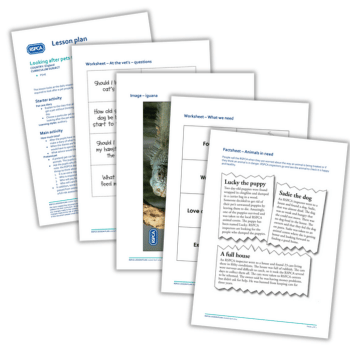
As National Pet Month approaches, explore our handpicked selection of educational resources that will not only celebrate our furry, scaly, and feathered friends, but also integrate seamlessly into your curriculum…
What is National Pet Month?
National Pet Month raises awareness of responsible pet ownership and celebrates the many benefits of our cherished companions. Find education resources on the official National Pet Month website.
When is National Pet Month?
National Pet Month 2025 runs throughout April.
EYFS ideas
Looking after pets activity pack
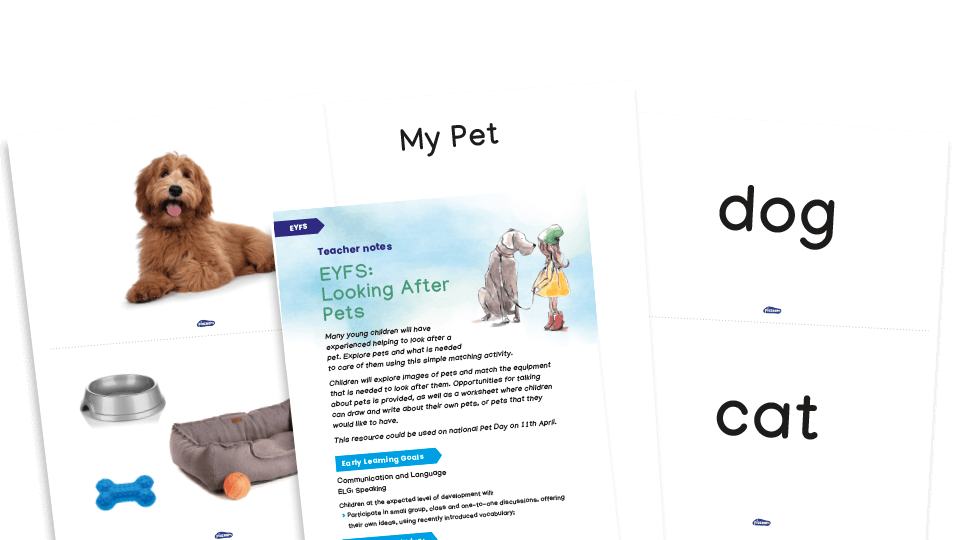
Learn all about pets and how to take care of them with this free simple matching activity from literacy resources website Plazoom. Children will explore images of pets and match the equipment that is needed to look after them.
There are lots of chances to talk about pets, plus use the included worksheet to draw and write about your own pet (or dream pet!).
Mog the Forgetful Cat lesson and assembly pack
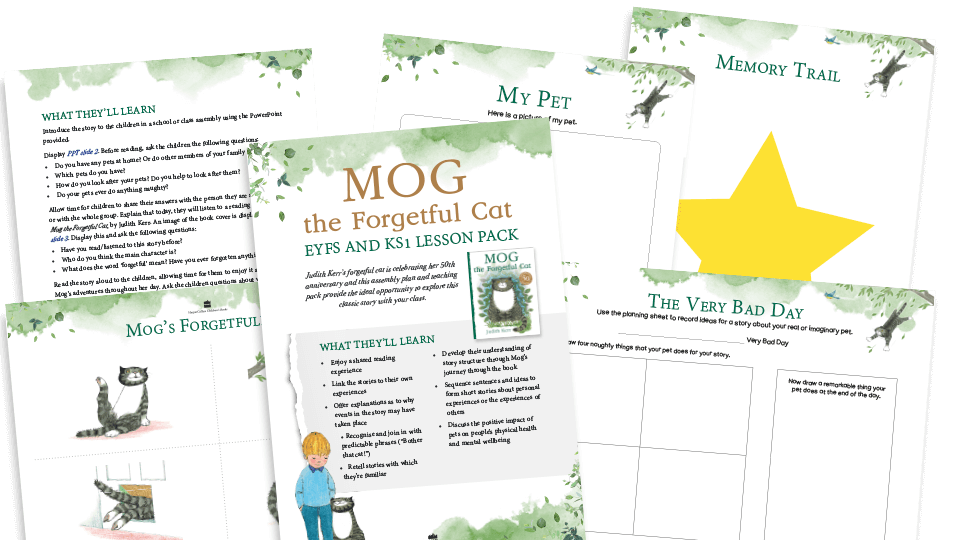
Judith Kerr’s forgetful cat is over 50 years old! This free assembly plan and teaching pack will help you explore this classic story with your class. Children will:
- Link the story to their own experiences
- Explain why events in the story may have taken place
- Recognise and join in with familiar phrases
- Retell the story
- Sequence sentences and ideas
- Discuss the positive impact of pets on our lives
KS1 and KS2 ideas
Teaching about pets lesson plans
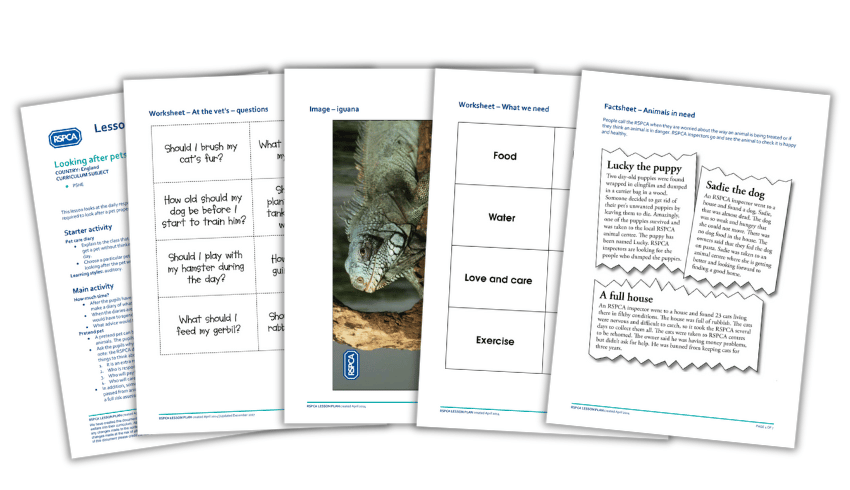
Over 58.4 millions animals are kept as pets in the UK so it’s important to understand what they need to be happy and healthy. Does your class know how to care for their pets?
These free teaching resources will help children to understand pets as living animals with needs and feelings.
They’ll learn about the five welfare needs of animals kept as pets, how different pets have specific needs and what our responsibilities are to our pets.
MFL lesson plan
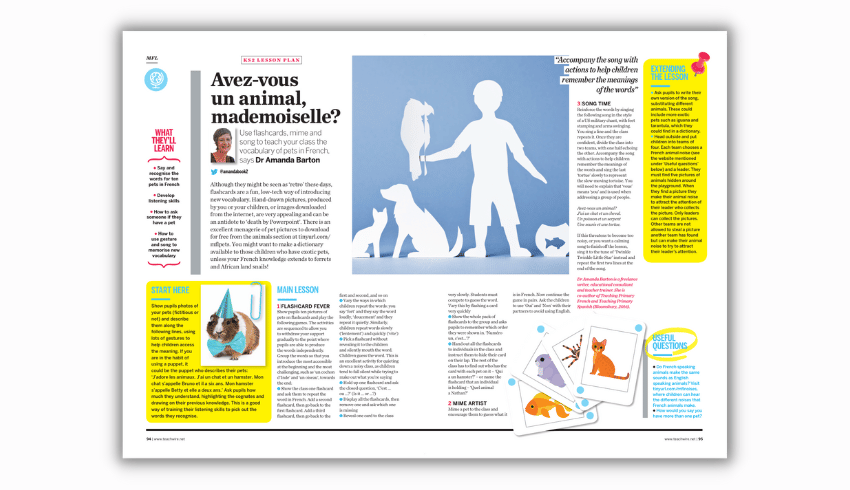
Use flashcards, mime and song to teach your class the vocabulary of pets in French, with this free KS2 lesson plan from Dr Amanda Barton.
Animals and us
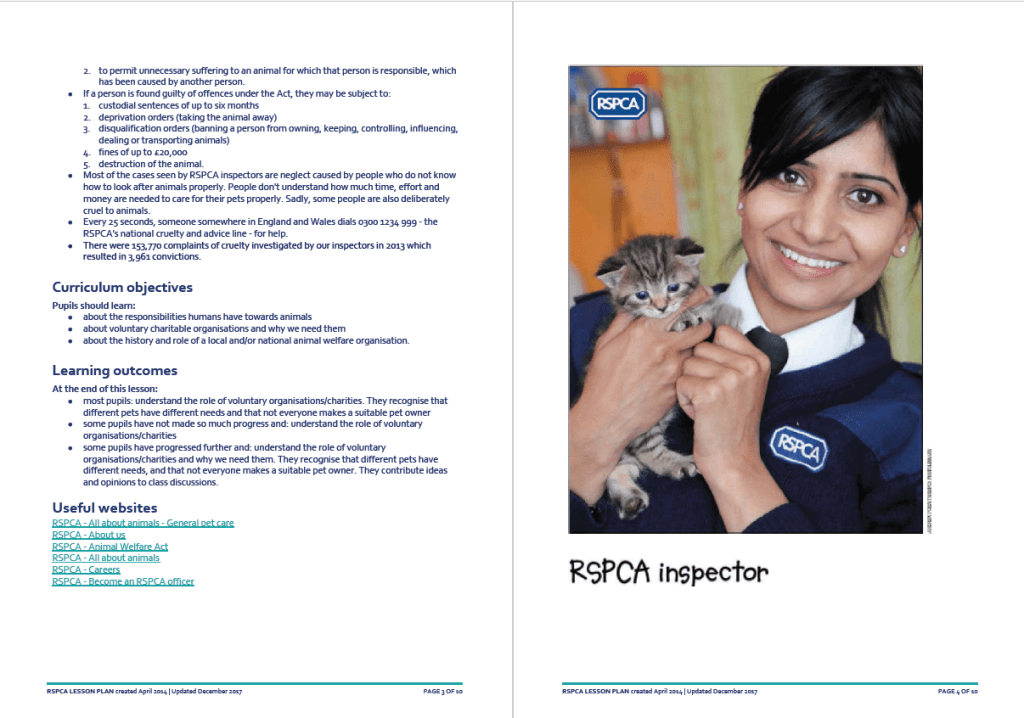
These free lesson plans will help your class explore the topic of animal welfare and the importance of responsible pet ownership. Pupils will also look at the work of the RSPCA and what they do to help animals in need.
Persuasive writing for KS1
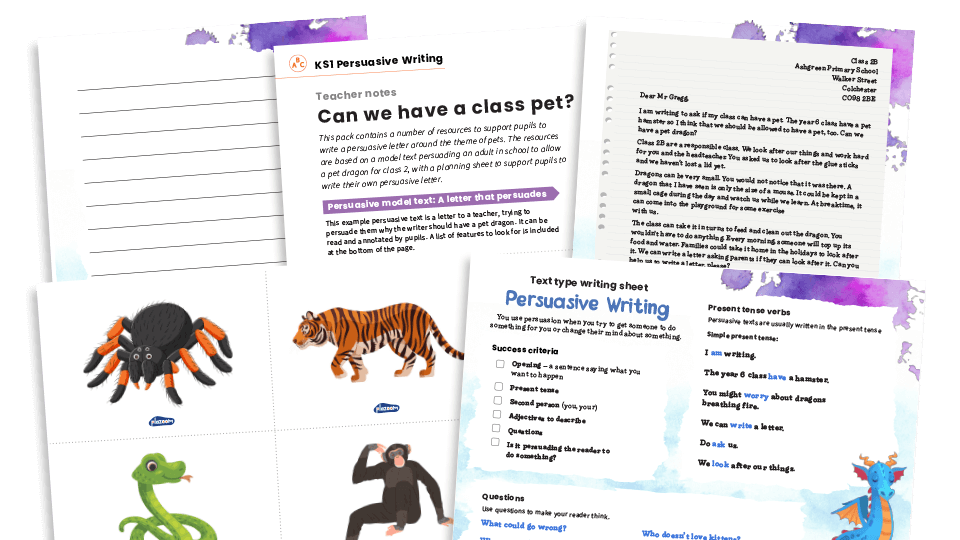
Teach your class how to write persuasively with this KS1 text types resource pack from Plazoom. The resources are based on a model text persuading a teacher to allow a pet dragon.
The pack includes a model text, a writing sheet, idea cards, a writing plan and special themed writing paper.
Comprehension and writing for KS2
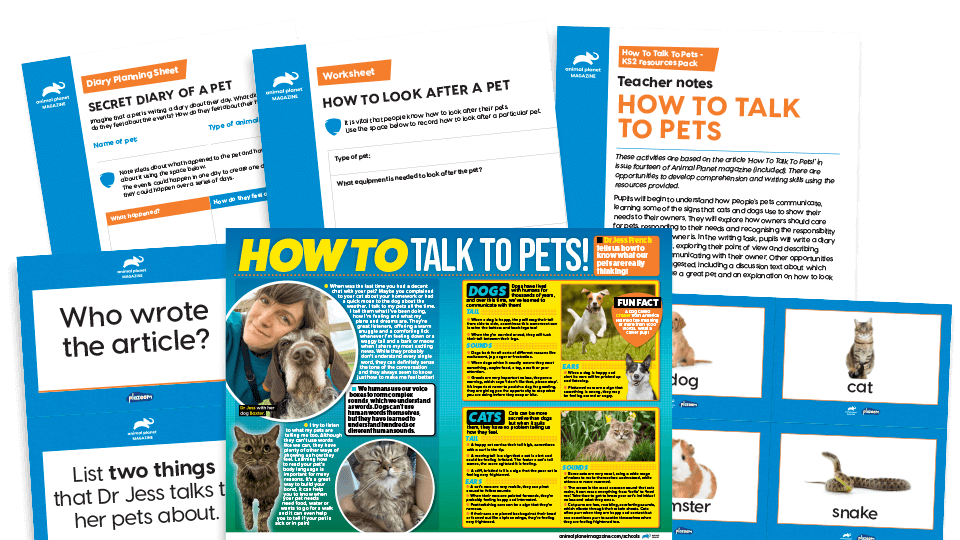
Download this free unit of work about how pets communicate with their owners. Pupils will explore pet ownership, including how to care for animals.
The included non-fiction article will develop students’ comprehension skills and inspire writing about which animals make suitable pets, an explanation of how to look after pets and a diary entry from a pet’s point of view.
KS3 and KS4 ideas
Dogs and the law
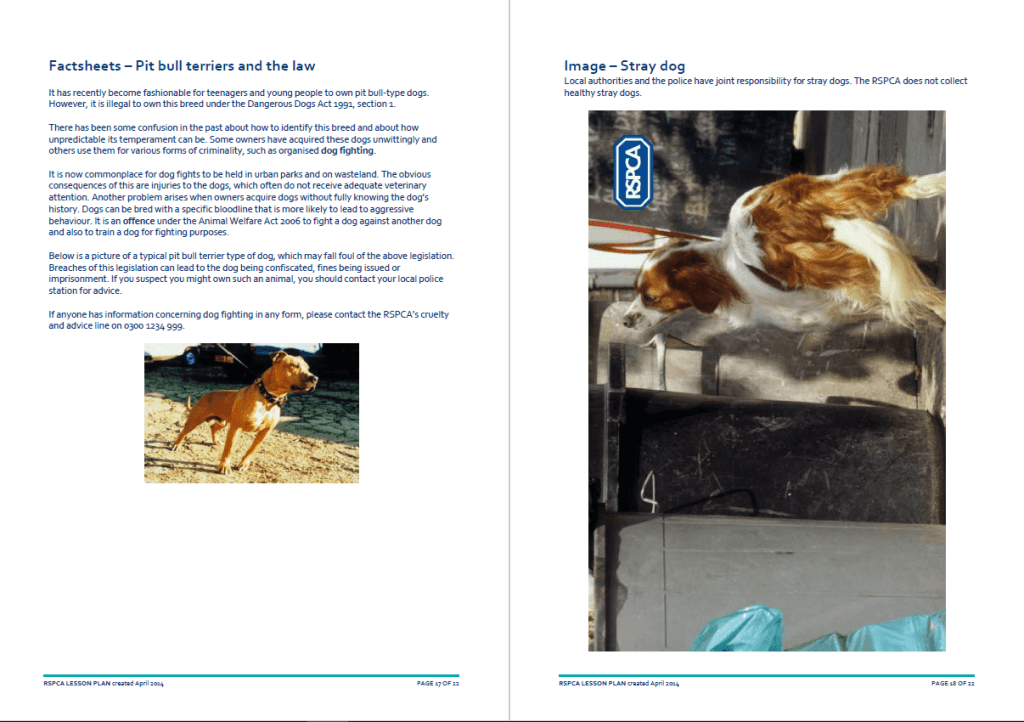
In this free activity, students consider different laws relating to dogs and other pets.
Rights and responsibilities
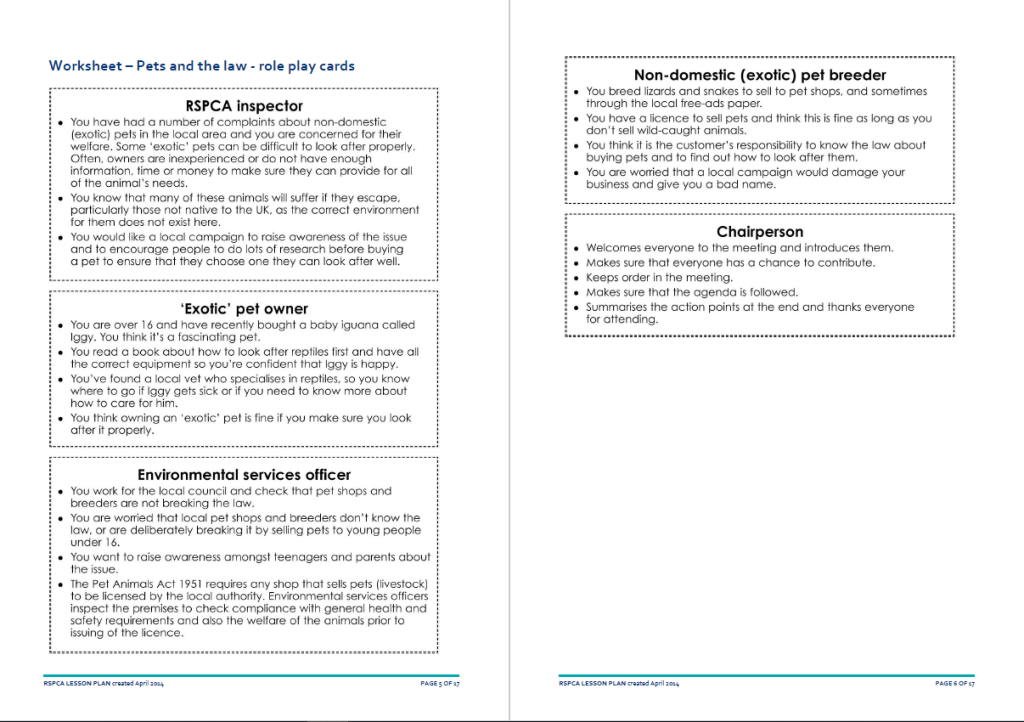
Use roleplay to explore responsible pet ownership with this lesson plan which focuses on non-domestic exotic animals.
Debating animal welfare
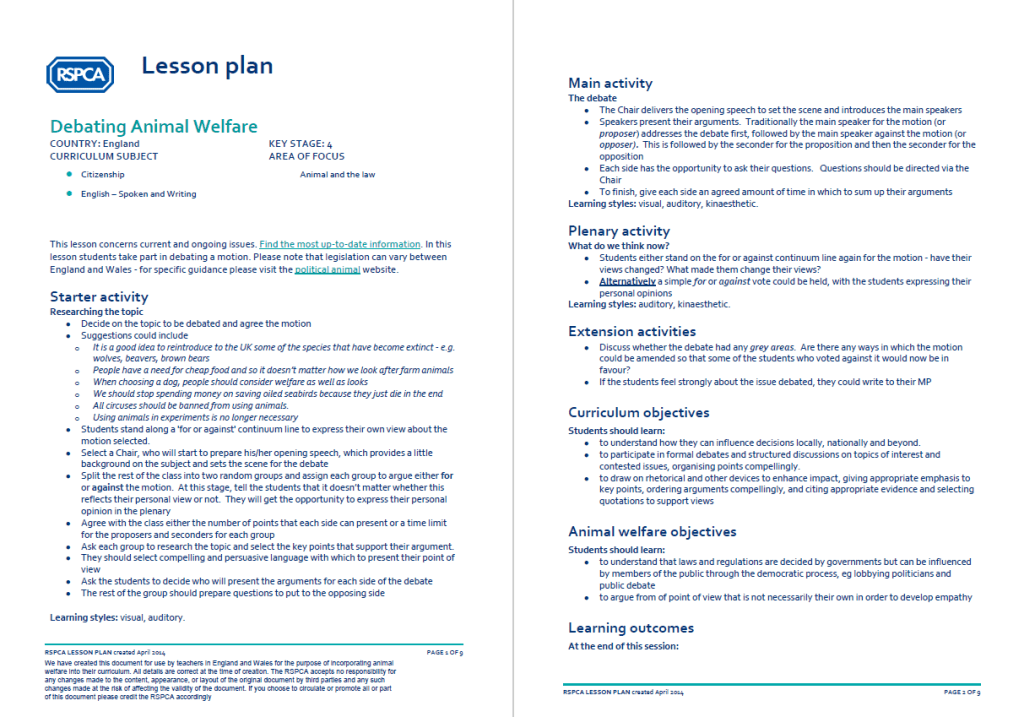
In this free lesson from the RSPCA students will take part in debating a motion regarding animals and the law.
Find more great resources from the RSPCA at education.rspca.org.uk/education and follow @RSPCA_official on X.
How pets in the classroom can support pupils’ emotional wellbeing

School pets can do wonders in the classroom, and the benefits far outweigh the challenges…
As a headteacher and animal lover, knowing how to care for and live alongside animals has always been an area of educational interest for me.
Animals have so much to teach us. They can improve the emotional wellbeing of children in a way that is so hard to find elsewhere.
When I joined Belchamp St Paul CofE Primary in Suffolk I was eager to talk to the current headteacher about my previous experiences with animals in school.
Trending
I emphasised how much my former pupils had loved their school pets and what a great educational tool they had been. The head shared my enthusiasm and before long Belchamp St Paul had its own resident guinea pigs.
From there, our register of school pets increased organically. Our budgies now live in a communal area of the school called the atrium, we have guinea pigs in class and my pet python also makes regular visits. These school pets are all dearly loved by both the children and staff.
I often find children sitting contemplatively in the atrium, simply watching and enjoying the twittering and chirping of the budgies as they eat their lunch.
We have non-permanent animals at the school too which we incorporate into the curriculum, such as tadpoles, chicks and ducklings.
What better way to help the children learn about life cycles than letting them watch the animals hatch and grow in real time in their own classrooms?
Once fully grown, the frogs are properly released, and the ducks and chickens often end up coming home with me.
Reap the benefits
We have regular animal visitors too, including my family dog Wren, plus horses, llamas and sheep, all owned by local farmers and residents.
As a rural school, I felt it was important that children experience this part of our community first-hand and develop an understanding of how animals are raised and cared for in our area.
Undoubtedly, the biggest benefit of having the school pets is seeing how they significantly improve the emotional wellbeing of our pupils.
Children who are incredibly anxious or upset are encouraged to spend a few minutes with a guinea pig in their lap or a bird on their shoulder.
With some of our children experiencing challenging home lives, being able to come and relax and even share their thoughts with the pets can provide some much-needed comfort and time to reflect.
Of course, there is science to support our approach to school pets too. Studies have shown that consistent animal interaction can help with emotional, cognitive, behavioural, educational and social development.
Animals provide an opportunity for children to practise social skills and conversation with a non-judgemental audience, which helps to increase self-esteem and confidence.
I love nothing more than watching the children change and grow in this way when interacting with our animals. As a parent and a teacher, I have also specifically noted the beneficial effects on wellbeing our python can have on children who are on the autism spectrum.
It has long been noted that deep pressure stimulation can have an immediate effect on mood and behaviour as it helps to calm the central nervous system. Our python can provide this with great success, as he slowly and calmly wraps around the children’s arms.
It really is amazing to witness the way the pupils relax after just a few minutes with him.
Unique selling point
Many schools may be wary about introducing school pets or bringing in animals to enhance the curriculum. This may be due to hesitance from parents and carers.
However, we’ve found everyone to be consistently supportive of our approach and it has worked out to be a unique selling point of our school. Animal handling is always supervised and our risk assessments are completed in detail and shared with the school community.
Although there may be a degree of additional work and admin that comes with having pets in the school, I can confidently say that the benefits far outweigh the challenges.
Danielle O’Connell is headteacher at Belchamp St Paul CofE Primary in Suffolk.









